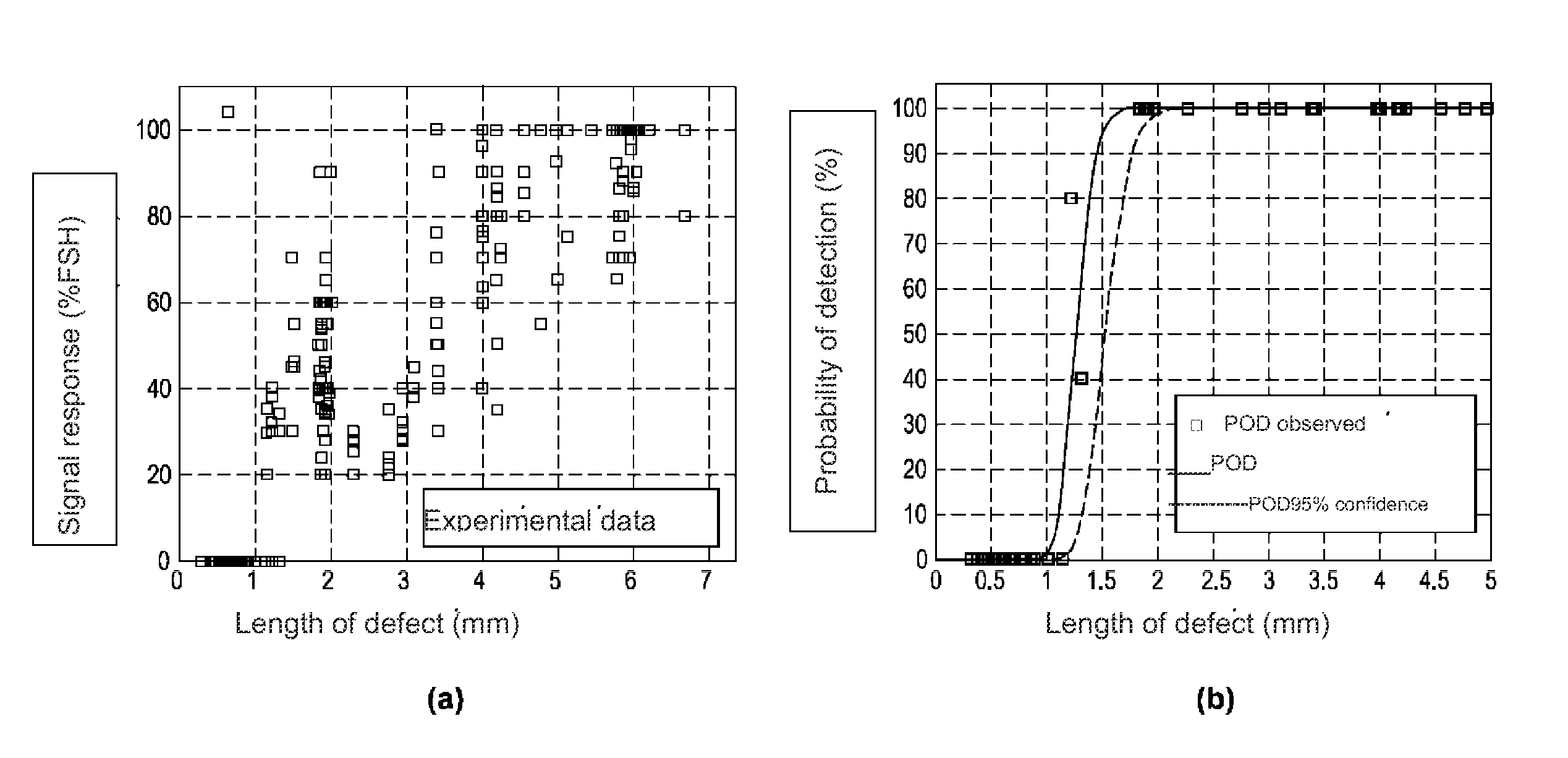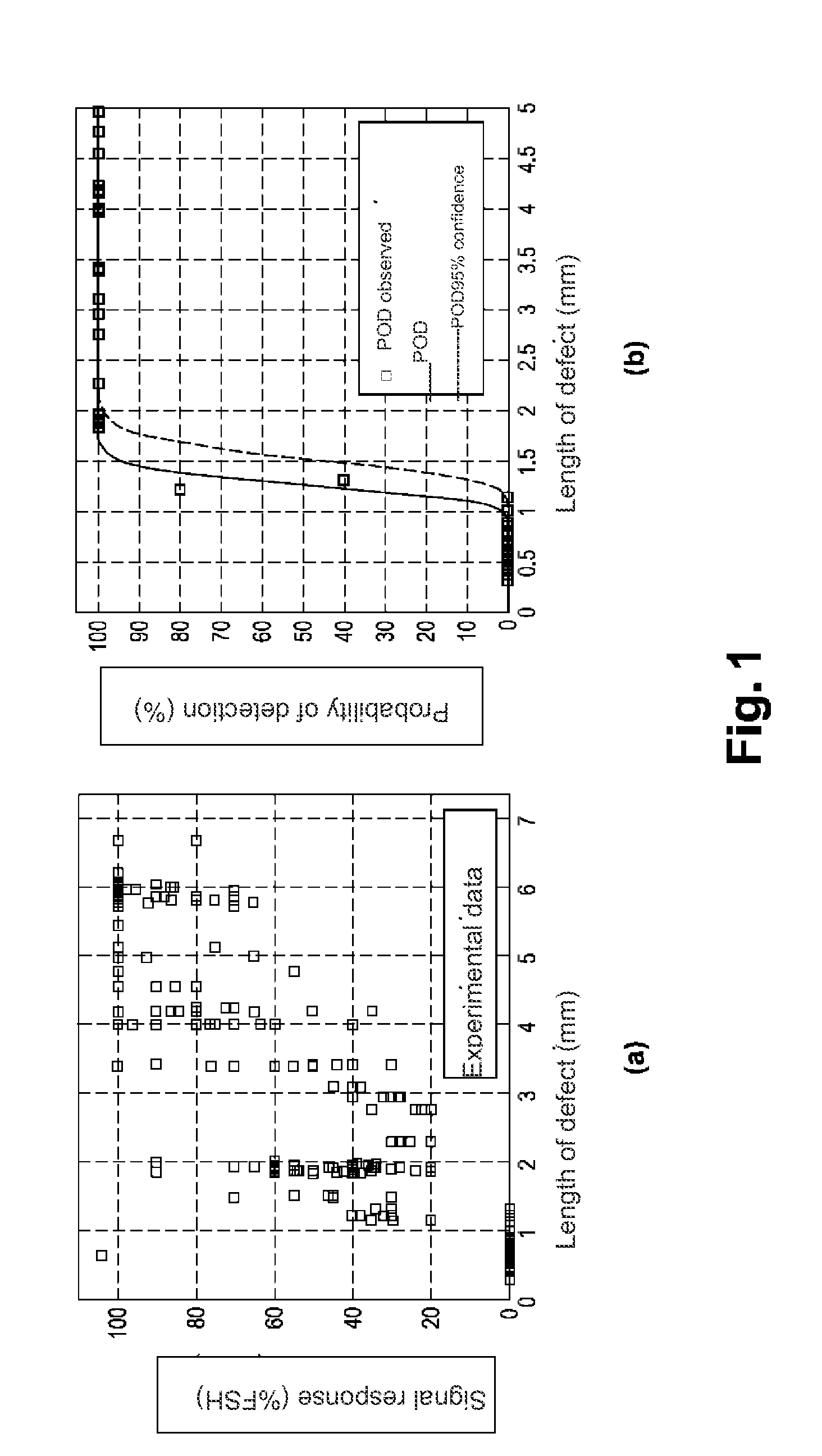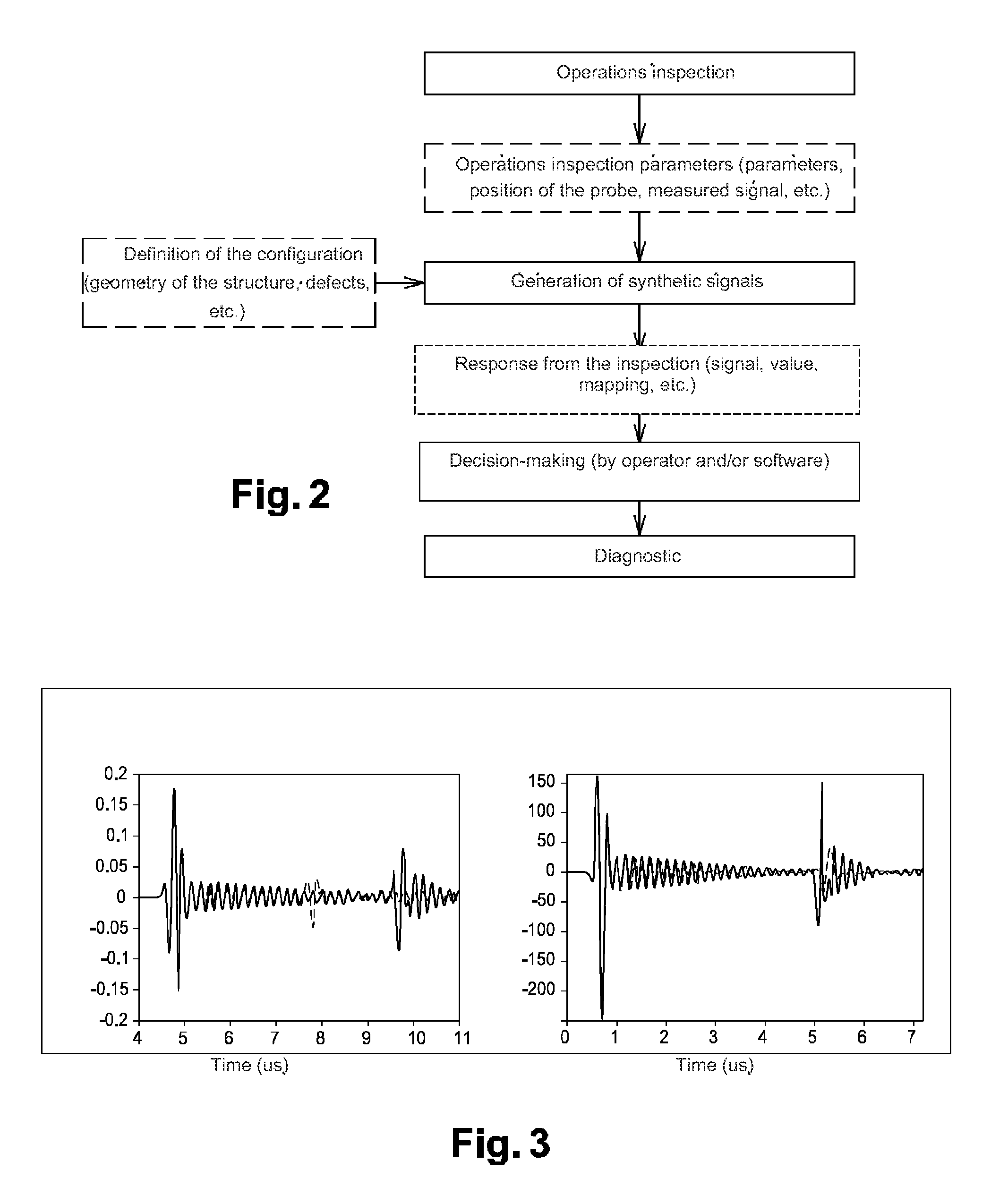Method of simulating operations of non-destructive testing under real conditions using synthetic signals
- Summary
- Abstract
- Description
- Claims
- Application Information
AI Technical Summary
Benefits of technology
Problems solved by technology
Method used
Image
Examples
Embodiment Construction
[0020]This invention intends to remedy the disadvantages of the prior art by proposing a method of simulating non-destructive testing using synthetic signals.
[0021]To this effect, this invention concerns, in its more general sense, a method of simulating non-destructive testing using at least one probe, characterized in that it comprises the following steps:[0022]a measurement for inspection parameters, linked to the position of said probe in the space; and[0023]a generation of synthetic signals corresponding to an operation of non-destructive testing.
[0024]According to an embodiment, said generation of synthetic signals is partly conditioned by a configuration generated by a configuration generator that consists of a virtual structure model.
[0025]Preferably, said virtual model of the structure is completed by the introduction of defects and / or by the modification of the properties of the structure elements.
[0026]According to an embodiment, said synthetic signals are measured signal...
PUM
 Login to View More
Login to View More Abstract
Description
Claims
Application Information
 Login to View More
Login to View More - R&D
- Intellectual Property
- Life Sciences
- Materials
- Tech Scout
- Unparalleled Data Quality
- Higher Quality Content
- 60% Fewer Hallucinations
Browse by: Latest US Patents, China's latest patents, Technical Efficacy Thesaurus, Application Domain, Technology Topic, Popular Technical Reports.
© 2025 PatSnap. All rights reserved.Legal|Privacy policy|Modern Slavery Act Transparency Statement|Sitemap|About US| Contact US: help@patsnap.com



